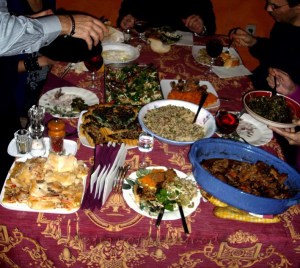Half of Greek population fear that they can wake up homeless next day due to factors beyond their control.
It’s December 13 and finally the winter is here. No more hot weather and mosquitoes, no more sockless shoes and summer dresses. However, living in a time that the Greek economy is sluggish the winter is our difficult time because we have to spend on heating oil and there are many who cannot not afford it. Today 1 third of the Greeks live with less than 500 euros. Even worse, there are many people among us deprived of a shelter that can protect them.
According to FEANTSA’s (European Federation of National Organisations working with the Homeless) research data, the number of street homeless people and those in transitory shelters in the city of Athens is approximately 11.000 (3.000 Greeks and 8.000 foreigners). Of course, one of the effects of the economic crisis is the change of the profile of the homeless. In the past, they were mostly people with alcohol, drug or psychiatric problems. Today they are immigrants, elderly people and people who have lost their jobs or their housing.
In these harsh economic times, let’s do not forget them. Instead of having done nothing but feeling pity for them, let’s take action!
Seek out organizations that help homeless families.
Volunteer at your local soup kitchen.
Donate your used clothing for redistribution.
Donate children toys for redistribution. The new face of homeless in Greece embodies poor immigrants, families hit by the economic crisis and single mothers without money for a deposit. Their children need toys.
Buying a cheese pie, a nutrition bar or a snack for a homeless or making an extra serving of meal and bring it to a street person in your neighbourhood are things that most of us can afford.
Homeless do not need our pity but do need our love and support.
SOUP OF HOPE

Xinohondros is the Cretan equivalent of trahanas, made with cracked wheat (hondros) and sour (xino) sheep’s or goat’s milk.
1 (1,5-2 k.) whole chicken
4 carrots, washed and grated
1 cup of rice
3/4 cup of xinohondros or trahanas
salt and black pepper
lemon juice
a cup of strained yoghurt
Place the chicken in a large pot, cover with water and bring to a boil. After 10 minutes remove the scum, add the carrots, reduce the heat, add salt to taste and simmer until the chicken is very tender.
Remove the chicken from the pot, place it in a serving dish and sprinkle it with lemon juice and pepper.
Strain the stock and place it in a clean pot. Bring to a boil, add the rice, add salt and pepper to taste and cook. When the rice is almost done add the xinohondros. When the xinohondros is tender beat the yoghurt until creamy and add it to the soup. Stir over a very low heat for 1 minute and serve.
Non profit organizations dedicated to provide the poor and homeless of Athens with nutritious meals.
City of Athens Homeless Shelter
Klimaka. For details ring +30 210 341 7160.
Caritas Athens Refugee Soup Kitchen
ΓΙΑ ΕΛΛΗΝΙΚΑ ΕΔΩ














